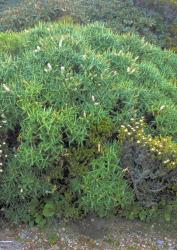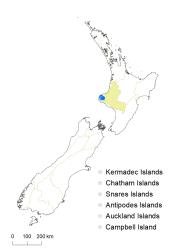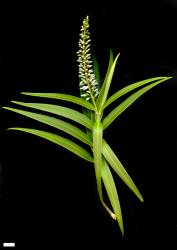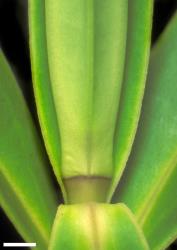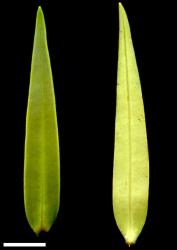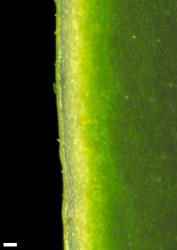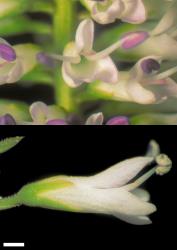- ≡ Hebe stricta var. egmontiana L.B.Moore in Allan, Fl. New Zealand 1, 907 (1961)
Stems black when dry, glabrous or with bifarious, eglandular hairs. Leaves narrowly lanceolate to linear, 36–106 mm long, 5.5–14.5 mm wide; lamina sub-coriaceous, sparsely eglandular-puberulent on midrib above, glabrous on midrib beneath; margin glabrous at the edge but a few short papillae on lamina near the margin above. Calyx lobes glabrous on faces, mixed glandular- and eglandular-ciliolate on margins. Corolla tube = lobes.
V. stricta var. egmontiana plants are recognised by their narrow sub-coriaceous leaves. They share glabrous stems and glabrous faces of the calyx lobes with var. lata and some plants of var. stricta. V. stricta var. lata plants are distinguished from var. egmontiana plants by their broader, firmer-textured leaves, which have short cilia along the margins.
North Island: Taranaki (Mt Taranaki and Pouakai Range).
Forest margins and scrub, lowland to sub-alpine. Recorded elevations range from 335 to 1311 m.
Flowers: January–May; fruits: January–May, persisting all year.
2n = 80 (see Bayly & Kellow 2006, as Hebe stricta var. egmontiana).
The name koromiko is probably also applied to this variety, but no specific names have been recorded.



